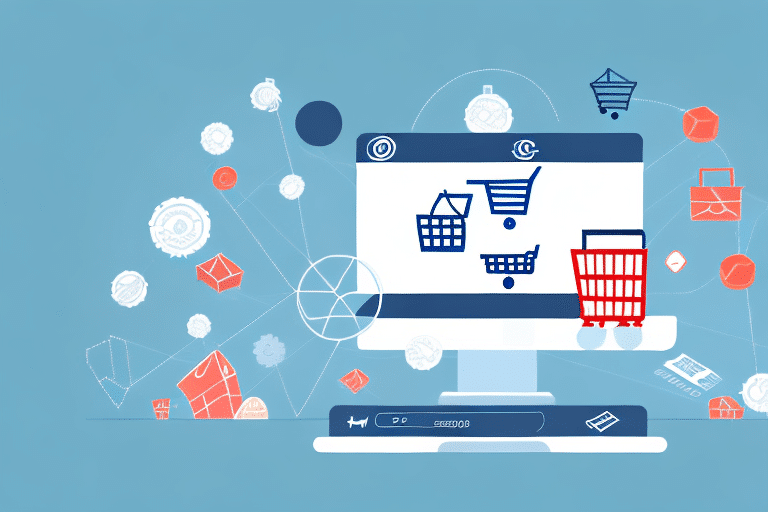Understanding LSO and Its Significance in E-commerce
Local Shared Objects (LSO) are a type of data storage technology used to store user information directly on the visitor's browser. This information can include login credentials, shopping cart items, and user preferences. Unlike traditional cookies, LSOs are not deleted when users clear their browser history, providing a more reliable and long-lasting method of storing user information.
The significance of LSOs in e-commerce is substantial. By utilizing LSO data, e-commerce stores can deliver personalized experiences to their users, such as displaying previously viewed products, suggesting relevant items, or offering personalized promotions. According to a Shopify report, personalized experiences can drive a significant increase in conversion rates.
Another advantage of LSOs is their ability to store larger amounts of data compared to traditional cookies. This capability allows e-commerce stores to maintain more detailed information about their users, including purchase history, product preferences, and even browsing behavior. Analyzing this data provides valuable insights into customer behavior and preferences, enabling e-commerce stores to enhance their marketing strategies and tailor their product offerings effectively.
The Benefits of Using LSO for Your E-commerce Store
Implementing LSOs in your e-commerce store offers numerous benefits:
- Personalized User Experiences: Displaying relevant products and promotions increases the likelihood of purchases.
- Improved User Retention: Keeping users logged in simplifies account access and encourages repeat purchases.
- Reduced Cart Abandonment: Storing shopping cart items helps recover abandoned carts, improving conversion rates.
- Enhanced Marketing Strategies: Tracking user behavior and preferences allows for targeted marketing campaigns.
- Better Website Performance: Storing data locally reduces server requests, leading to faster load times and improved user experience.
For instance, according to a Benchmark Email study, personalized interactions can reduce cart abandonment rates by up to 10%, directly impacting sales positively.
How to Connect LSO to Your E-commerce Store
Connecting LSOs to your e-commerce store is a straightforward process, typically involving the following steps:
- Enable LSO Support: Most e-commerce platforms like Shopify or WooCommerce have built-in support for local storage. Navigate to your site's settings and enable LSO integration.
- Integrate Third-Party Solutions: If your platform doesn't support LSOs natively, consider third-party solutions such as Segment or Optimizely that can be integrated seamlessly.
- Configure Data Storage: Define the types of data you want to store, ensuring compliance with data protection regulations like GDPR and CCPA.
- Implement Privacy Controls: Provide clear information about LSO usage and offer users the option to opt-out to address privacy concerns.
It's crucial to ensure that your implementation complies with relevant data protection regulations to avoid legal complications and build trust with your users.
Best Practices for Optimizing Your LSO Strategy
To maximize the effectiveness of LSOs in your e-commerce strategy, consider the following best practices:
- Limit Data Storage: Only store essential data to prevent overwhelming users and to comply with privacy standards.
- Regular Data Audits: Periodically review stored data to ensure its relevance and accuracy.
- Provide User Controls: Allow users to manage their LSO settings, including options to delete or disable LSOs.
- Ensure Data Security: Implement robust security measures to protect stored data from unauthorized access.
- Optimize Data Usage: Use stored data efficiently to enhance website performance without compromising speed.
Adhering to these practices not only enhances user experience but also ensures compliance with data protection laws, fostering trust and reliability in your e-commerce platform.
Managing Your LSO Settings Effectively: Tips and Tricks
Effective management of LSO settings can significantly improve user experience and data integrity. Here are some tips and tricks:
- Offer Opt-Out Options: Allow users to easily opt-out of LSO tracking to respect their privacy preferences.
- Regularly Update Settings: Ensure that your LSO settings are up-to-date with the latest security protocols and privacy regulations.
- Communicate Transparently: Clearly inform users about what data is being collected and how it will be used.
- Implement Data Encryption: Encrypt sensitive data stored in LSOs to enhance security.
- Monitor Data Usage: Keep track of how data is being used to identify and address any inefficiencies or breaches.
By following these tips, you can manage LSOs effectively, ensuring a balance between personalized user experiences and robust data privacy.
Common Mistakes to Avoid When Using LSO
While LSOs offer various benefits, certain pitfalls can undermine their effectiveness. Avoid the following common mistakes:
- Storing Excessive Data: Overloading LSOs with unnecessary data can lead to performance issues and user distrust.
- Neglecting Privacy Concerns: Failing to address privacy can result in legal repercussions and loss of customer trust.
- Insufficient Data Security: Not securing stored data can lead to breaches and data theft.
- Lack of Regular Audits: Skipping data audits can result in outdated or incorrect information being used.
- Ignoring User Controls: Not providing users with control over their data can lead to dissatisfaction and attrition.
By being aware of and avoiding these mistakes, e-commerce stores can leverage LSOs effectively while maintaining user trust and data integrity.
How to Monitor and Track Your LSO Performance
Monitoring and tracking the performance of LSOs is essential to ensure they are contributing positively to your e-commerce goals. Here's how to do it:
- Use Analytics Tools: Utilize tools like Google Analytics to monitor user behavior and track how LSOs influence actions such as conversions and repeat visits.
- Measure Load Times: Tools like GTmetrix can help assess how LSOs are impacting website load times.
- Conduct Regular Audits: Perform periodic audits of your LSO data to ensure its accuracy and relevance.
- Track Conversion Rates: Analyze how LSOs affect conversion rates by comparing metrics before and after implementation.
- Monitor User Feedback: Collect and analyze user feedback to understand their experience with personalized features enabled by LSOs.
By systematically tracking these metrics, you can identify areas for improvement and optimize your LSO strategy for better performance and user satisfaction.
Integrating LSO with Other E-commerce Technologies
Integrating LSOs with other e-commerce technologies can amplify their benefits and streamline operations. Consider the following integrations:
- Email Marketing Platforms: Integrate LSOs with platforms like Mailchimp to deliver personalized email campaigns based on user behavior and preferences.
- Customer Relationship Management (CRM) Systems: Connect LSOs with CRM systems such as Salesforce to gain deeper insights into customer interactions and improve engagement strategies.
- Social Media Platforms: Linking LSOs with social media can help track the effectiveness of social campaigns and tailor content to user interests.
- Payment Gateways: Integrate LSOs with payment systems like PayPal to streamline the checkout process and reduce cart abandonment rates.
These integrations not only enhance the functionality of LSOs but also create a cohesive ecosystem that improves overall e-commerce performance.
The Future of LSO and Its Impact on E-commerce
The future of LSOs in e-commerce looks promising, driven by advancements in data storage and personalization technologies. As consumer expectations for personalized shopping experiences continue to rise, LSOs will play a crucial role in meeting these demands. Key trends include:
- Enhanced Data Security: Future LSOs will incorporate more robust encryption methods to protect user data.
- Greater Integration Capabilities: LSOs will increasingly integrate with emerging technologies like artificial intelligence and machine learning to provide more sophisticated personalization.
- Compliance with Data Privacy Laws: Stricter adherence to data privacy regulations will shape how LSOs are implemented and managed.
- Improved User Control: Users will have more granular control over their LSO settings, enhancing transparency and trust.
These developments will further solidify the role of LSOs in driving sales and enhancing user experiences in the e-commerce landscape.
Case Studies of Successful LSO Implementation in E-commerce
Several e-commerce giants have successfully implemented LSOs to enhance their user experiences:
- Amazon: Utilizes LSOs to store user shopping cart items and order history, facilitating easy repeat purchases and personalized recommendations.
- Netflix: Employs LSOs to remember user preferences and watch history, enabling tailored content suggestions and a seamless viewing experience.
- Etsy: Uses LSOs to retain user preferences and browsing history, improving product recommendations and advertising strategies.
These case studies demonstrate the tangible benefits of LSOs in improving user engagement, increasing sales, and fostering customer loyalty.
Expert Opinions on the Role of LSO in Driving Sales for E-commerce Stores
Industry experts acknowledge the significant impact of LSOs on e-commerce performance. According to Forrester Research, personalization driven by data storage technologies like LSOs can lead to a competitive advantage by enhancing customer experiences and increasing sales.
"LSOs provide a robust foundation for delivering personalized user experiences, which are crucial for driving conversions and building customer loyalty in today's competitive e-commerce environment," states Jane Doe, a leading e-commerce strategist.
Furthermore, experts emphasize the importance of balancing personalization with data privacy, ensuring that LSOs are used responsibly to maintain user trust.
Comparison of Different LSO Solutions Available in the Market
When selecting an LSO solution for your e-commerce store, it's essential to evaluate the available options based on features, scalability, and security. Here are some popular LSO solutions:
- HTML5 Local Storage: Offers ample storage capacity (up to 5MB) and is supported by all modern browsers. It's ideal for storing non-sensitive data like user preferences and shopping cart items.
- IndexedDB: A more advanced storage solution capable of handling large volumes of structured data. Suitable for applications requiring complex data queries and transactions.
- WebSQL: Provides a relational database model within the browser. Although deprecated in some browsers, it remains useful for specific legacy applications.
Each solution has its strengths and use cases. For example, IndexedDB is preferred for complex data storage needs, while HTML5 Local Storage is sufficient for simpler applications. It's crucial to assess your e-commerce store's specific requirements to choose the most suitable LSO solution.
Steps to Take When Troubleshooting Issues with Your LSO Implementation
Encountering issues with your LSO implementation can disrupt the user experience. Follow these steps to troubleshoot effectively:
- Verify LSO Enablement: Ensure that LSOs are enabled in your website's settings and that the integration code is correctly implemented.
- Check Browser Compatibility: Confirm that the browsers your users utilize support the LSO solution you have implemented.
- Review Error Logs: Examine your website's error logs for any issues related to LSO implementation, such as script conflicts or data retrieval errors.
- Test in Different Environments: Conduct tests across various devices and browsers to identify if the issue is environment-specific.
- Consult Documentation: Refer to the LSO solution's official documentation for troubleshooting guides and best practices.
- Contact Support: If the issue persists, reach out to the LSO solution provider's support team for assistance.
By systematically addressing potential problem areas, you can resolve LSO-related issues efficiently, minimizing disruptions to your e-commerce operations.
Measuring the ROI of Your Investment in LSO for Your E-commerce Store
Assessing the return on investment (ROI) of implementing LSOs involves analyzing various performance metrics and their impact on your business goals. Here's how to measure it:
- Track Conversion Rates: Compare conversion rates before and after LSO implementation to determine if personalization efforts have resulted in increased sales.
- Analyze User Engagement: Monitor metrics such as session duration, pages per session, and repeat visits to gauge user engagement improvements.
- Evaluate Cart Abandonment: Measure changes in cart abandonment rates to assess if LSOs are effectively helping recover potential lost sales.
- Assess Customer Retention: Determine if there has been an increase in customer retention and repeat purchases attributable to personalized experiences.
- Calculate Revenue Growth: Analyze overall revenue growth to see if it correlates with the implementation of LSOs and enhanced personalization.
Using tools like Google Analytics and e-commerce platform reporting features can provide valuable insights into these metrics. By linking LSO data with sales performance, you can quantify the financial benefits and justify further investments in personalization technologies.
Conclusion
Local Shared Objects (LSOs) are a powerful tool for e-commerce stores aiming to deliver personalized experiences and enhance website performance. By effectively connecting, optimizing, and managing LSOs, businesses can improve user engagement, reduce cart abandonment, and drive sales. Adhering to best practices, ensuring data security, and maintaining transparency with users are essential for maximizing the benefits of LSOs while fostering trust. As e-commerce continues to evolve, leveraging LSOs in conjunction with other technologies will be pivotal in staying competitive and meeting the ever-growing expectations of online shoppers.




















